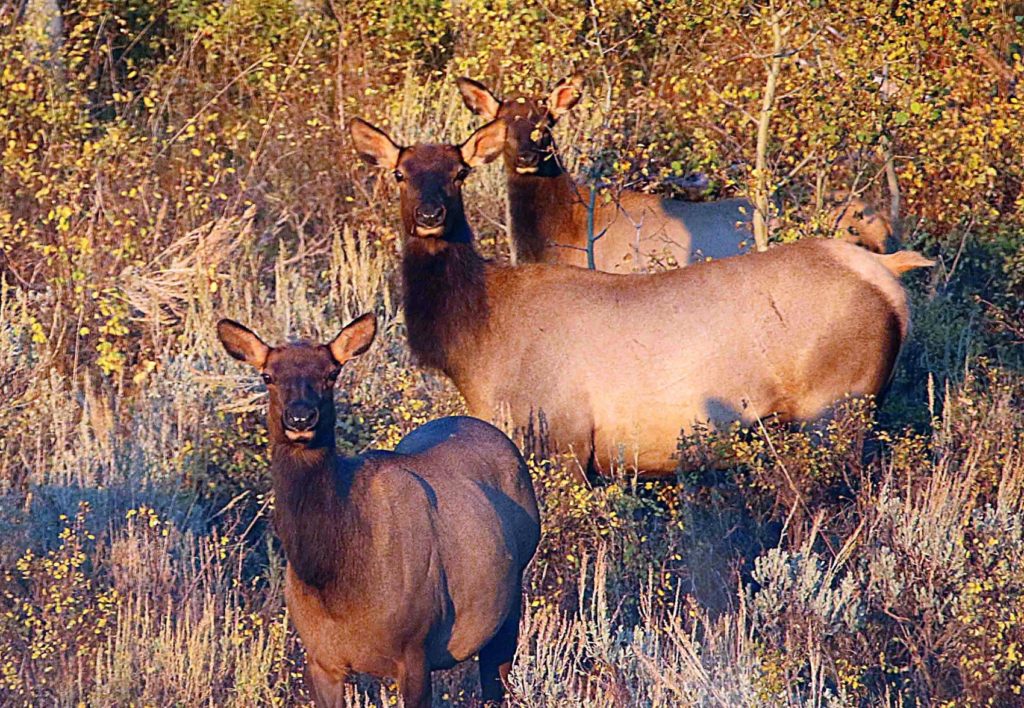The Division of Wildlife Resources is offering hunters antlerless permits to help control the number of big game.
SALT LAKE CITY — Big game populations across most of the state are down in population due to several years of drought. As part of the Division of Wildlife Resources game management practices they are offering hunters antlerless permits to help control the number of game.

Courtesy: Utah Division of Wildlife Resources
DWR has determined having just over 400,000 deer across Utah is a healthy number. This year, using their own calculations, they are down to 305,700 deer in the state.
“We’ve had several years of drought and are still facing ongoing extreme drought conditions in the state, which has a significant impact on the survival rates of deer,” DWR Big Game Coordinator Covy Jones said. “We currently have more demand for deer hunting in Utah than we have the supply for. While it is antlerless deer permits, not buck permits, that impact deer population numbers, we are recommending a decrease for both types of permits.”
DWR wildlife biologists have been evaluating the health of deer populations throughout the year using GPS collars and surveys against the previous year’s harvest data from deer and elk hunts. This year they recommended issuing a total of 73,075 general-season deer hunting permits a 950-permit decrease from last year.
“The antlerless big game hunts are a great opportunity to not only harvest meat and make some great memories outdoors, but also to help manage wildlife populations and maintain healthy herds and landscapes,” DWR Licensing Coordinator Lindy Varney said. “However, hunters should be aware that we’ve had a few drought years in Utah recently, which has a significant impact on the survival rates of deer and other big game animals. As a result, there are fewer antlerless deer, elk, pronghorn and bighorn sheep permits available this year than last year.”
Wild game has proven to be an excellent source of meat. A cow elk can provide between 120 to nearly 200 pounds of boneless meat, depending on the age. A doe deer will provide approximately 40 pounds of boneless meat that can then be eaten in a variety of ways.
Meat from wild game is generally more nutritious because it is leaner than farm fed animals. There is almost no fat on animals raised in the wild. Wild meat has no antibiotics or added hormones.
Big game meat is often used as hamburger, roasts, steaks, stews, stir-fry or in fajitas.
Applications for the antlerless hunt is due no later than 11 p.m. on June 16 to be included in the drawing for hunting permits. Before you can apply for a 2022 antlerless permit, bonus point or preference point, you must have a valid Utah hunting or combination license.
Combination licenses can be purchased on the Utah Division of Wildlife Resources website, by calling 1-800-221-0659 or by visiting a license agent.
Applications for antlerless hunts can be submitted through the DWR website. Details about the different units including boundary descriptions, biologist notes, and population and harvest statistics can be found on the Utah Hunt Planner.
The drawing results will be available on or before July 7. If any antlerless permits are available after the drawing, you can purchase them beginning at 8 a.m. on July 21. Check the online 2022 Utah Antlerless Application Guidebook for details. You can find all of the regulations for hunting both antlered and antlerless big game in the 2022 Utah Big Game Field Regulations Guidebook.
For questions about applying for an antlerless permit, call 1-800-221-0659 or your nearest DWR office.

